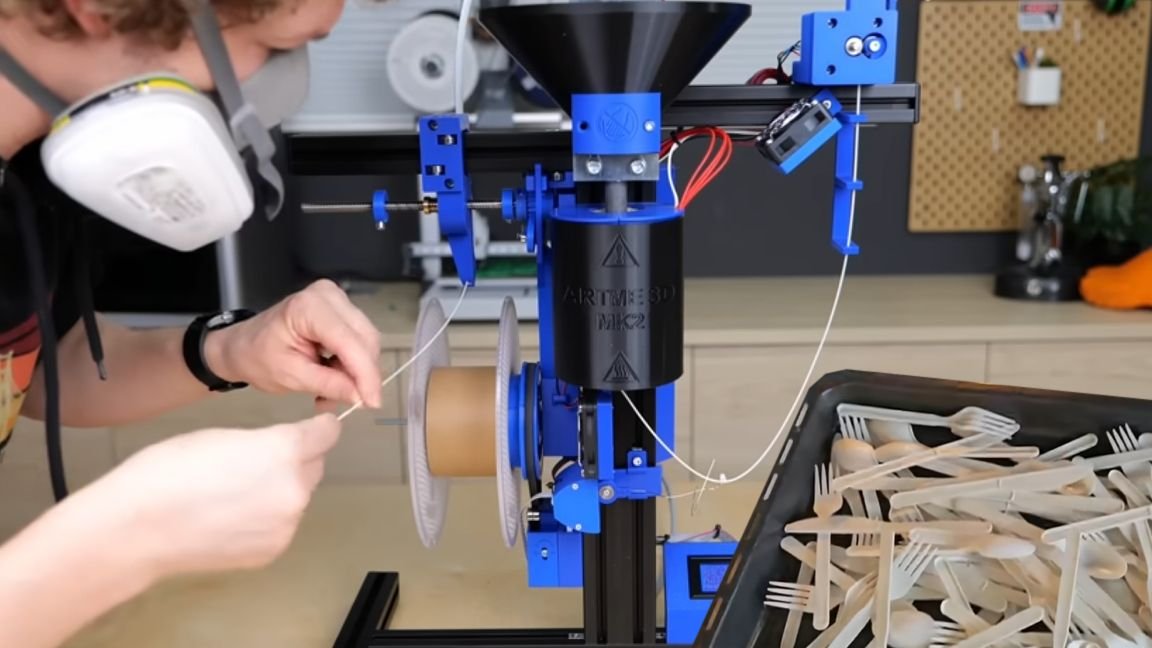We live in a world with a lot of waste from our daily activities – why not put your waste to another use? At least that’s what CNC Kitchen (as they’re called on YouTube) seems to have thought when it recently melted down plastic kitchen cutlery into working 3D printer filament.
CNC Kitchen uses a custom filament extruder to implement this project. It involves taking plastic pellets (or in this case plastic waste from kitchen utensils), melting them down and making them into a long strand. This strand is then captured and wound onto a spool to be used as filament by a 3D printer.
Image 1 of 2
(Image credit: CNC Kitchen)
Filament works best when it is dry and is easier for the machine to process when broken into small pieces. CNC Kitchen had to shred the plastic utensils into tiny pieces and bake them in a low temperature oven to remove any moisture that would otherwise compromise the quality of the filament. Once it was finished, he inserted the pieces into an Artme3D.
The first batch was very thin and extremely brittle. To solve this problem, CNC Kitchen lowered the temperature, resulting in a thicker strand of filament. When printing with the material from the utensils, the finished objects could be snapped into place quickly. To increase rigidity, CNC Kitchen decided to test it with different mixes of cutlery and fresh PLA pellets. This increased the durability of the prints and proved that the cutlery could be recycled into usable 3D printer filament.
If you don’t mind all the prep work, this could be a viable option for recycling old PLA. Whether it is considered eco-friendly or not is up for debate as it depends on some factors like power consumption, transportation, etc. Ultimately, your mileage may vary. However, if you want to take a closer look at this project, you can see it in action on YouTube. There you’ll also get a look at how the material prints and what it looks like when you add some color to the mix.
